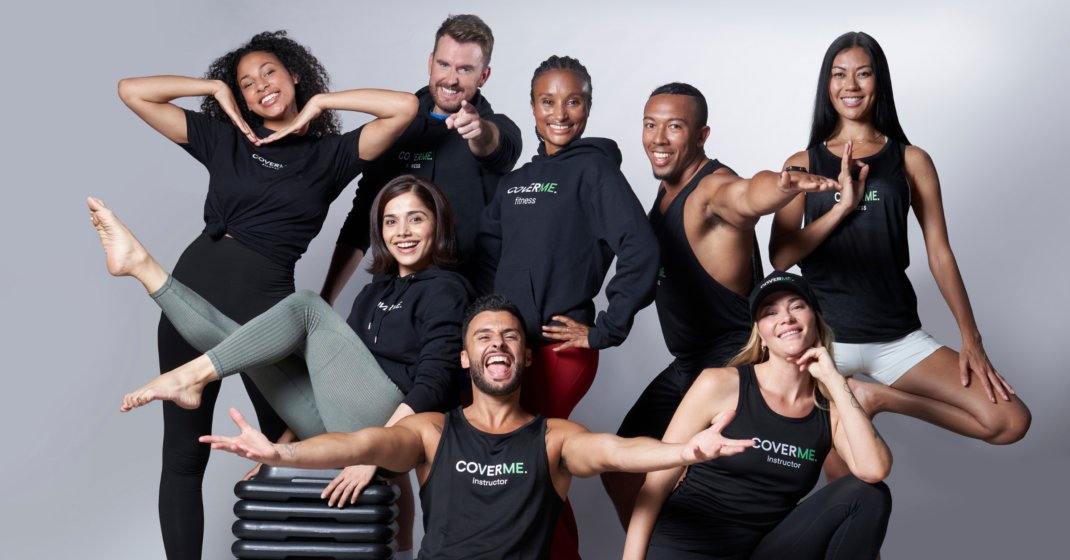Your Talent-Attraction Program
Six steps to building a top team.

The pandemic has made many fit pros and members seek their workouts virtually. To win them back—and fill your classes and training schedules to the brim—owners and managers may need a new approach for wooing and winning the best talent: a talent-attraction program.
Finding, training and retaining team members is not a new challenge for fitness facilities. But over the last 3 years, a confluence of events has exacerbated the struggle. Club closures, the rise of the at-home exerciser, the flood of job openings in other industries and the disruptions to child care have driven many fitness professionals to seek employment elsewhere. Even as some restrictions lifted, those who returned found themselves tasked with additional cleaning duties and forced to adapt to teaching while wearing a mask.
Sherri McMillan, owner of Northwest Personal Training in Portland, acknowledges the toll this has taken. “Fitness professionals are burned out and exhausted,” she says. “The expectations placed upon them are so high right now. They are passionate about the industry and helping people, but endurance is wavering!”
Importantly, it is the fitness professionals you employ—not the equipment, amenities and programs you offer—that are the key to competing with another new reality: the mass migration to virtual fitness. Clients not only trust but appreciate the convenience of having a trainer in their pocket (literally). The only way to win them back is to invest in your team, placing even greater importance on the humans that bring your gym to life.
How to do that—after several years of financial losses and a future that’s unpredictable and uncertain? Let’s explore talent attraction.
3 Talent-Attraction Methods
Chances are, you know what you should be doing right now: searching for the best trainers and instructors, providing a competitive salary (not just an hourly wage), increasing benefits (not just the same ol’ perks), and offering opportunities for growth as both professionals and employees. But first, you’ve got to get them through the door. That said, talent attraction is typically approached in three ways:
1. Offer Open Casting
You should always be looking for talent, even when you don’t have open positions. Keep a job posting up at all times, and receive résumés and conduct preliminary interviews early and often. You then can offer jobs immediately, if the time is right—or retain promising candidates’ contact information for future openings. Here are some ways to make your search more productive:
List specific roles and descriptions. Posting specific openings versus general ones will increase the possibility of quality candidates coming your way. For example, create separate job posts for each type of instructor—indoor cycling, yoga, strength and aquatic. This will also help with keyword searches and offer a first layer of screening.
Add a Careers page on your website. Clubs and studios are prioritizing this to market talent online. John Heringer, owner of Method 3 Fitness in San Jose, California, says, “Adding a permanent career section to our website is a new initiative for us. It’s a big project, and it has become a priority. Much like we use our website to tell our story and explain our differentiations to potential clients, we want to do the same to attract the best talent.”
Update your qualifications and review process. Think about what you really need to know. Is a résumé necessary? Instead, could you learn about qualifications through a survey application or via job board response? The more you can find out ahead of time, the less time-consuming the process.
Follow up right away. Hiring is happening quickly these days, and incredible talent may get snapped up quickly. To make it easy to reach out, create a post-application process that includes a phone or video conference screening, group interviews (either in real life or virtually), and a technical skills check. These can be batched together in a group or via recorded video to speed up the process.
2. Actively Scout for Potential Hires
Get out in your local fitness community, and keep your finger on the pulse of who’s out there. While it’s not good practice to poach instructors, creating relationships and networking with talent may be an investment that can help you fill your gaps in the future. Here are some ways to get started:
Tap your team for ideas. Start by talking to your current team, requesting referrals and slowly beginning to build a database of potential talent. You can also ask where else they take classes, or you can go out and take classes elsewhere yourself.
Do a social media search. Leah Rich, a talent attraction strategist who assists clubs in building their talent pool, suggests, “Find talent on Instagram by searching hashtags related to your method and geographic location. Once you locate pros that teach or train in a way that aligns with your needs and clientele, engage with their Instagram stories and introduce yourself, tell them about the opportunity to teach at your studio, and invite them in to try it out.”
Build relationships with educators. Many colleges and universities have programs designed to educate students to become instructors and trainers for the rec center. Developing a relationship with the fitness department might allow you to capture new fit pros as they enter the market after graduating or even beforehand, as they complete their degree.
For example, Steven Trotter, director of well-being at East Carolina University, offers a Group Fitness Instructor Academy two or three times per year, arming students with the technical and practical skills to lead group fitness classes. Upon completing the academy, students obtain an NCCA-accredited group fitness certification and teach at college recreation centers and local fitness facilities.
“Students graduating from university training programs are well equipped to lead world-class movement experiences and excited about the opportunity. At many colleges I’ve worked at throughout my career, we’ve trained and certified from 20 to 70 group fitness instructors through these 6- to 16-week courses each year. We get them ready for you,” says Trotter.
3. Recruit from Membership
Talent attraction and grooming is not new, but it can be time consuming, which often means it is the first recruitment method to fall by the wayside. Here’s how to make it easier:
Be on the lookout for good movers. Watch members in group fitness classes or on the weight room floor. If you see people who know what they’re doing and have winning personalities, get to know them, and plant the seed for becoming an instructor or trainer. Just be careful not to make any promises.
Create a pathway to ease them in. There’s no way to tell if prospective hires will end up being good at the job until they begin the process. Offer up exploratory conversations, career-information sessions or ways to shadow your current employees so interested members can see if this may be for them. You can also consider creating an informative tip sheet outlining the steps to get started, as well as any certifications or requirements they’ll have to meet.
“If a member becomes a trainer, even as a sub or on a very limited basis, it’s a win. They are typically already evangelists for the club, which is a bonus,” says Heringer.
See also: Hiring Checklist: Find the Best Talent
3 Ways to Ensure Retention Success
Once you find great employees, it’s more important than ever to do your best to keep them. According to Forbes.com, replacing someone earning a median salary of $45,000 would cost approximately $15,000 in direct and indirect costs (Hall 2019). Providing perks and financial incentives is a start. But retention also depends on being forward-thinking by providing thorough onboarding and plenty of opportunities for growth. Make sure to get to know the candidate and that the candidate gets to know you, as both will greatly affect how long a new hire stays with you. Then, try the following:
1. Get Creative with Pay and Benefits
Pay in our industry has often been a source of great debate. Today, guaranteed income, benefits such as health care and paid time off, and sustainable work hours are an even bigger conversation.
“One economic shift plaguing the industry is staffing shortages in other industries. The pay, benefits and additional incentives other companies advertise to stabilize their staffing shortages are luring trainers away,” explains McMillan. “When fast-food restaurants offer high wages, signing bonuses, regularly scheduled shifts and days off, trainers start to question whether they should give up their passion for making a higher income in a completely different industry.”
If increasing the hourly rate you offer is not possible, consider shifting to a guaranteed salary or regularly scheduled shifts to help stabilize paychecks. Investigate other benefits that might be attractive such as health insurance, retirement savings plans and paid time off, which are among the most requested perks.
2. Provide Thorough Onboarding
Jason Stella, national education manager at Life Time Fitness, believes improving the onboarding process is critical. “Having an effective team-member onboarding process is the top activity to positively impact retention. Speaking with some of the biggest certification companies in the world, I’ve learned they are experiencing record numbers of new candidates, which shows plenty of people are educating themselves to get into this industry. Facilities need to invest in creating and implementing a comprehensive onboarding process to make them immediately impactful.” The sooner new hires feel as though they belong and are making a positive difference, the more likely they are to stay put and see where it takes them.
3. Offer Opportunity for Growth
Career fitness professionals may not wish to stay trainers or instructors forever. Providing opportunities for career advancement is a must in the battle against employee turnover. Be on the lookout for employees who possess the skill sets necessary for other posts at your facility, including management roles, and consider helping them to upskill with on-the-job training. Providing in-house continuing education in fitness (and beyond) or providing a stipend for pros to use to advance their education will benefit both you and the employee.
See also: Retention: 5 Tips for Group Fitness
Your People Are Your Business
As facility owners and managers, we are in the people business, and we need great fitness professionals to provide our people with quality services. Exploring creative talent attraction and ways to build our teams is time well spent. It’s inevitable that our members will continue to demand more, and it will be essential for us to reimagine how to attract, train and retain a team that is up to that challenge.
Should You Be Okay With Side Gigs?
Your great talent may have explored self-employment over the past 2 years, and many have discovered they enjoy it. They may find it less stressful and easier to schedule around their life obligations—and they may have found that they could earn the same amount of money faster and easier while on their own. They may want to continue their side gig, especially if some of their clients (e.g., virtual ones from afar) couldn’t work with them otherwise. Suppose we want to attract some of these professionals back to our facility now. Does this mean the noncompete agreement is a thing of the past?
June Kahn, owner of Center Your Body Pilates in Louisville, Colorado, believes there is a fine line, but it’s something we must explore. “We absolutely need to embrace talent that has a side gig, but to a point,” she says. “If an instructor directly solicits members, I have an issue. This is the tricky part. However, if being a fitness professional is their only source of income, and I can only offer a few classes a week, I believe we need to find a way to coexist.”
She chooses to be open to the possibility, but she engages in a very deep discussion—both before hiring and during onboarding—to set mutually agreed-upon boundaries. She also carefully considers if what instructors are doing “on the side” might add to her business or detract from it (e.g., encourage or discourage members to join or renew).
We may not have all the answers now about how this can work. But we should socialize the concept and consider it might be a necessary path forward in a post-COVID world.
References
Hall, J. 2019. The cost of turnover can kill your business and make things less fun. Forbes.com. Accessed Feb. 27, 2022: forbes.com/sites/johnhall/2019/05/09/the-cost-of-turnover-can-kill-your-business-and-make-things-less-fun/?sh=2c4e93a97943.
Shannon Fable
Shannon Fable is a sought-after speaker, author and thought leader in the area of fitness business development and strategic innovation. She has spent more than two decades helping impressive brands such as Anytime Fitness, ACE, FIT4MOM® and BOSU® with business and program development. Fable served as chair of the ACE Board of Directors and is the co-founder of GroupEx PRO®, a cloud-based group fitness management tool that she successfully sold to Daxko in 2019. As a certified Book Yourself Solid® business coach, she helps fitness professionals navigate the industry to build scalable and sustainable careers.




